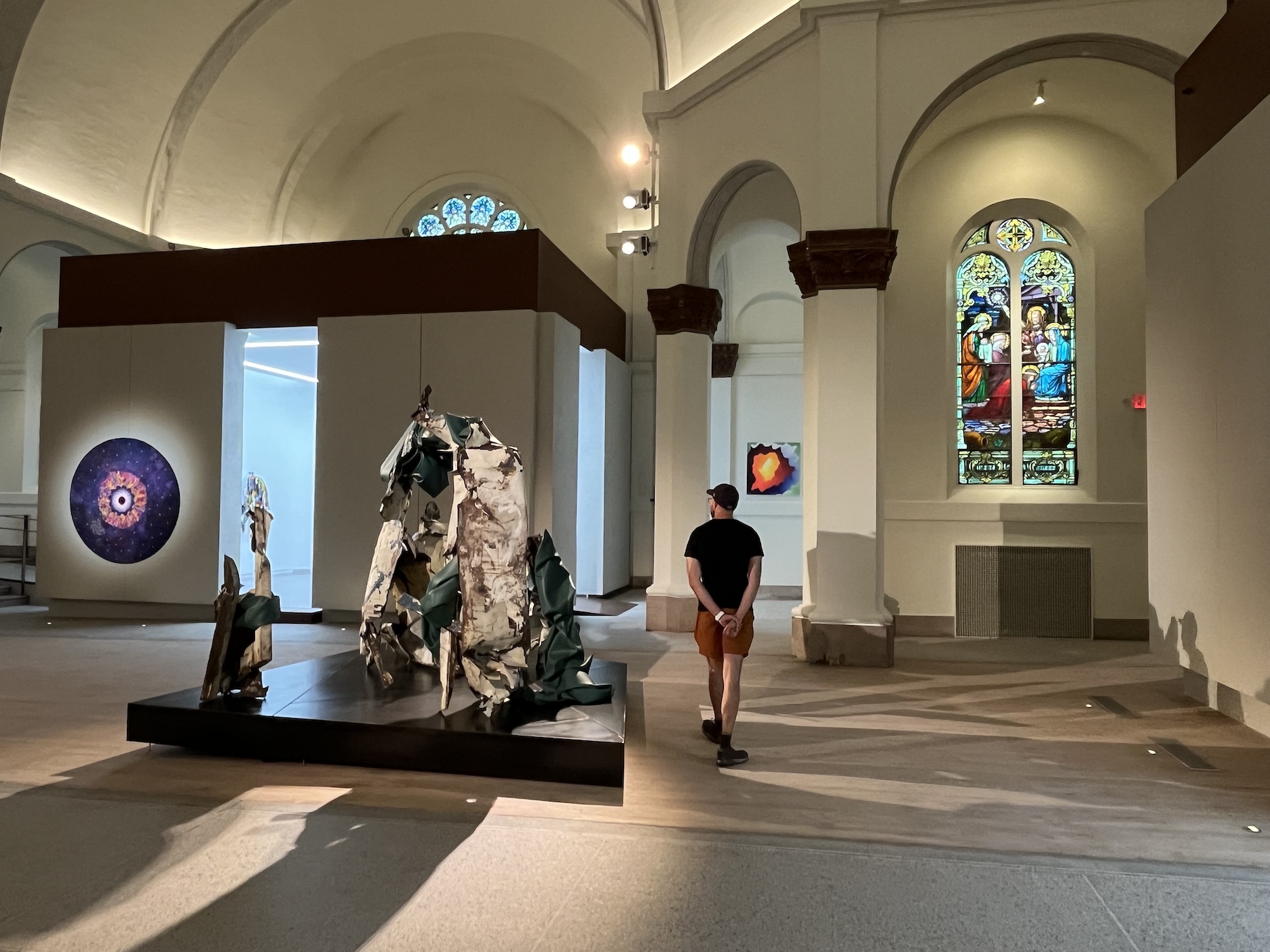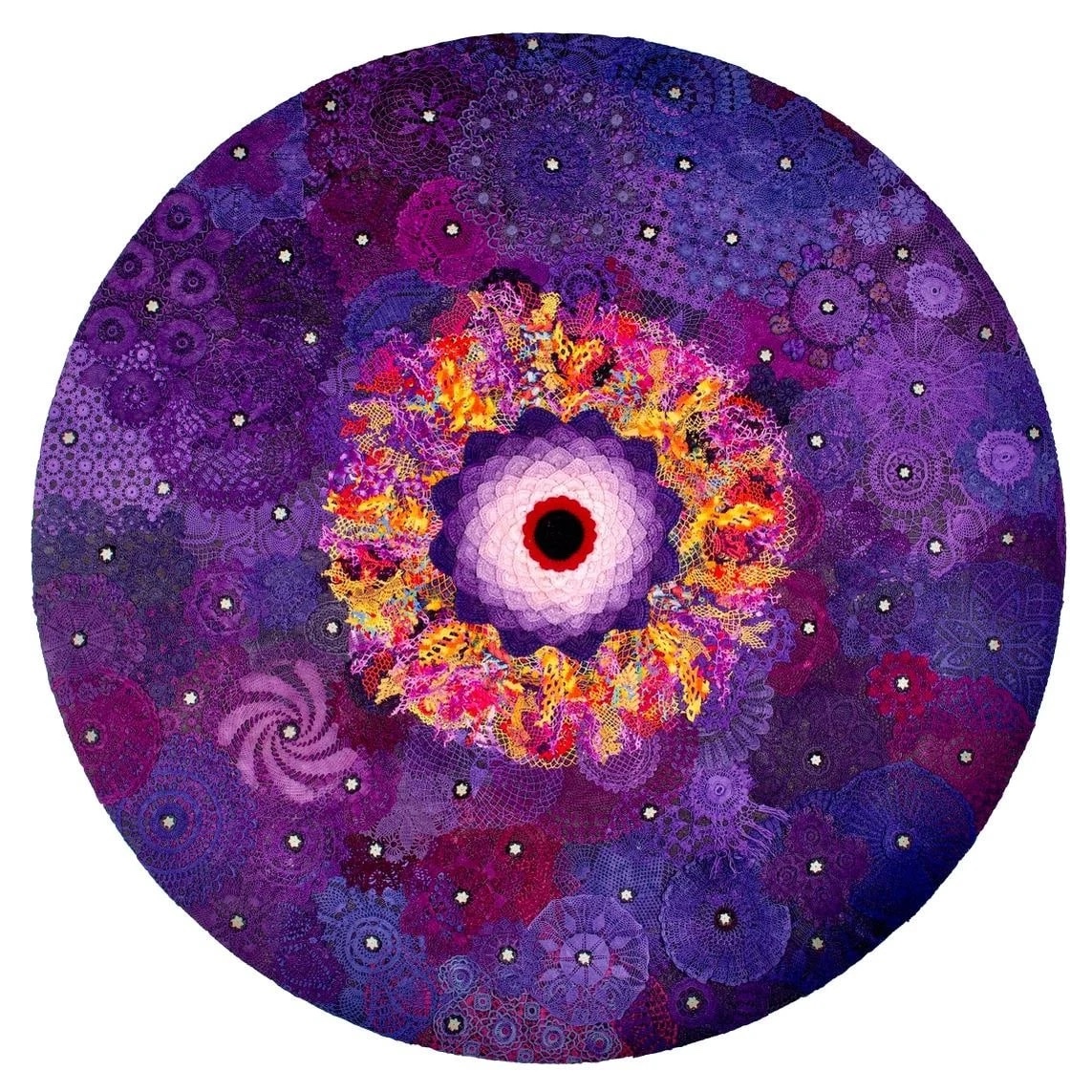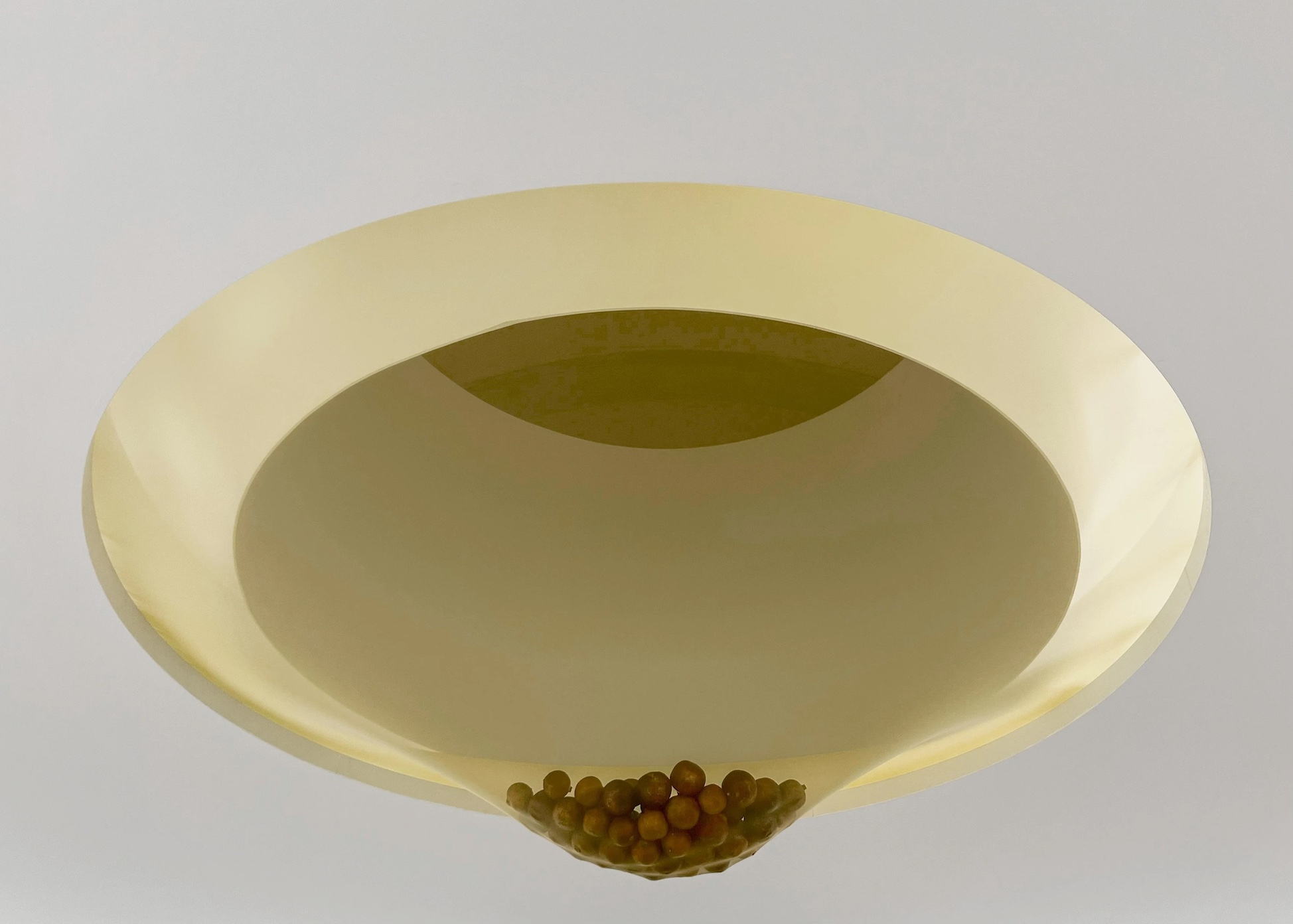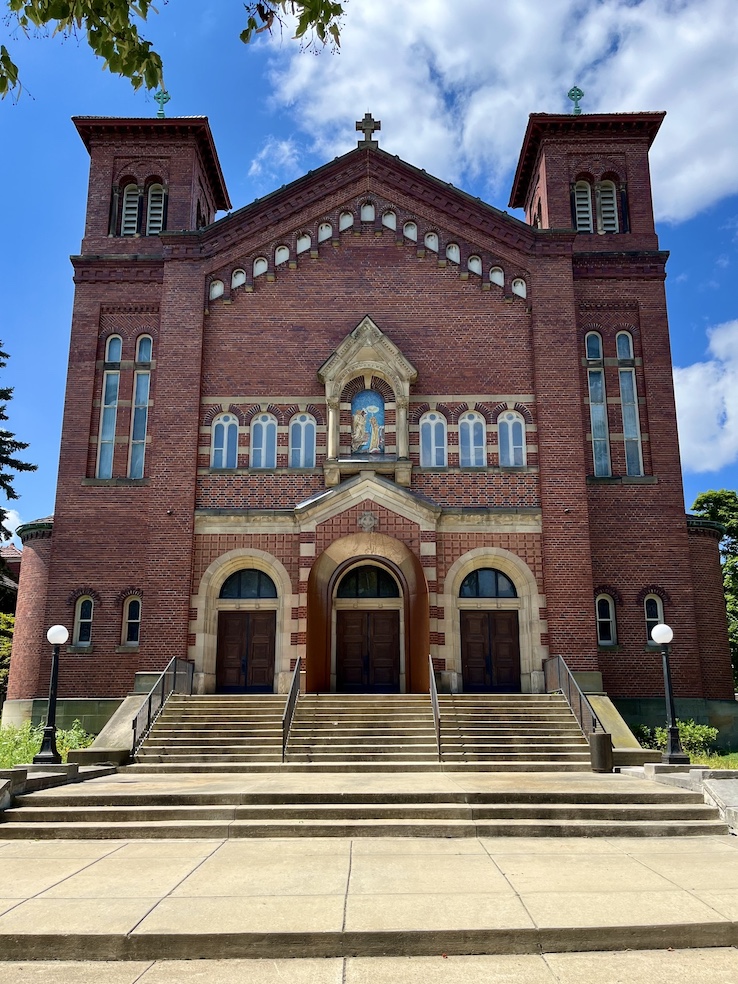
An installation view of In an effort to be held, curated by Allison Glenn, and on view at the Shepherd until October 12. Photo: Detroit Art Review
If you haven’t yet been to the Shepherd, the former church at the center of a new cultural complex on Detroit’s east side, you are missing out on one of the most stunning exhibition spaces in the metro area. Happily, In an effort to be held — the handsome second show at the brand-new gallery (it debuted May 18) — provides a compelling reason to push east of Indian Village to the three-acre site just a block off Jefferson. While a few elements have yet to be completed, notably the coffeeshop, the just-hatched Little Village, as the three block complex is called, boasts a bed-and-breakfast aimed at artists (but open to all), a library devoted to books on artists of color, a skateboard park designed by boarding-legend Tony Hawk, and a whimsical outdoor sculpture park with work by the late, great Charles McGee.
The whole complex is the brainchild of Anthony and JJ Curis. The couple, who own Library Street Collective, curated most of Bedrock’s multiple public art installations throughout downtown, including the “animated” alleyway The Belt, the towering Charles McGee black-and-white mural on the north end of Capitol Park, and the dazzling graffiti art on every level of the Z Garage. The interior of the 1912 Romanesque Revival church has been reimagined by Brooklyn’s Peterson Rich Office as a classic gallery “white box,” albeit one that celebrates, rather than fights, the architecture and the luminous stained glass.
The principal addition to the space is a freestanding mezzanine with a dramatic overlook on the now de-sanctified altar. At the center of this platform is a large oculus, maybe five feet across, that looks down on the gallery space immediately below.

Jordan Eagles, Vinci, Grayscale image of Salvator Mundi; Plexiglass, blood of an HIV+ undetectable long-term survivor and activist, and UV resin; 26 3/4 x 19 x 3 inches; 2018. (Subsequent images by Joseph Tiano, courtesy of Library Street Collective and the Shepherd.)
Curated by the Shepherd artistic director Allison Glenn (who grew up just east of her new workplace), In an effort to be held features one spellbinding piece that directly invokes the structure’s ecclesiastical past – Vinci by New York artist Jordan Eagles, who often, brace yourself, works in blood.
The artist generally sources his material from slaughterhouses, but in the case of Vinci, Eagles used the blood of a person with HIV who’s undetectable. The black-and-white photographic reproduction of the Renaissance portrait of Christ, Salvator Mundi (Savior of the World) – attributed to Leonardo da Vinci, though that’s also disputed, Glenn notes — is washed in a rich, even crimson that, softly illuminated from behind, fairly glows. Some may find the material and association disturbing – others, mesmerizingly beautiful. But there’s no question it’s hard to take your eyes off it.

Celeste, La constelación que viene, Pigments and acrylic base on dyed cotton canvas; Variable dimensions, approximately 29 feet x 16 feet; 2023.
At the far west end of the church, you’ll find the altar, stripped of religious objects, and overhead a delightful use of art in an architectural space. It’s an approach that Glenn particularly likes. “I love working with architecture,” she said. “A lot of my career has been working in public space – so when I saw the former church, I saw all the opportunities that existed outside the boxes.” In suspension above the altar, a bit like so many red-dyed clouds, La constelación que viene (The constellation that’s coming) represents the polar opposite mood from Vinci, powerful though that is. There’s a lightness and celebration attached to La constelación by the Mexican City duo Celeste (Fernanda Camarena and Gabriel Rosas Alemán), that uplifts and turns one’s gaze heavenward. It couldn’t fit the space Glenn chose any better if it tried.

Zak Ové, DP70, Vintage cotton doilies; 74 3/4 inches in diameter; 2023
Equally luminous in its way, though much more pointed in its use of color, is London artist Zak Ové’s DP70, a circular, multihued collage made entirely from vintage cotton doilies that, when seen from a distance, bear an uncanny resemblance to what you’d see looking through a rich kaleidoscope. The British-Trinadadian artist is best known for his loony-tunes, Crayola-colored sculptures, two of which were featured at the British Museum’s Africa Galleries last year. And while it’s mostly two-dimensional, DP70 does an astonishing imitation of a symmetrical, richly 3-D work of oddball power. “Hypnotic” is an understatement – yet at the same time, the whole conceit is drop-dead gorgeous. The artist uses a process he describes as “hyperbolic pattern-making,” invoking the masquerades of Canbulay, a Trinidadian harvest festival that came to represent emancipation in the former British colony of Trinidad and Tobago.

Cameron Harvey, Ancestor 26: Ceratonia Siliqua V; Acrylic, graphite, and reflective glass beads on canvas; 109 x 53 inches; 2023.
Another rich exercise in color is found in LA-based Cameron Harvey’s Ancestor 26: Ceratonia Siliqua V, a construction that looks rather like a ceremonial robe that ancient, far-away royalty might have sported. This is sensuous, high-concept work. Harvey rolls over unstretched, shaped canvas liberally strewn with paint that she impresses as she rotates. The deep-green, abstract horizontal image that repeats from bottom to top of the “garment’s” interior – which has a certain primitive mystique – was created by Harvey pressing her forearm repeatedly into the pigment. The artist has had solo shows in, among other cities, Venice, Rome, Chicago and Malibu. Harvey is currently doing a UCROSS residency in Sheridan, Wyoming. In an effort to be held is her first time exhibiting in Detroit.

Manal Shoukair, Seed of paradise, Nylon and pomegranates, Dimensions variable, 2024.
In another clever application of architecture to a work of art, Manal Shoukair – a Lebanese-American artist working in Detroit – suspended beige nylon from the Shepherd’s mezzanine oculus with a dozen or so pomegranates clearly visible at its center. Shoukair, a 2023 Kresge Foundation “Gilda Award” winner (named for the late Gilda Snowden, artist, and College for Creative Studies professor), grapples with Islamic spirituality and issues of “contemporary femininity,” according to her artist’s statement. The pomegranate is considered a sacred fruit in Islamic tradition, and here Shoukair has created – it might as well be said – an all-nourishing breast with pomegranates at its center. That Seed of paradise is visually lined up with the very spot where the cross used to stand on the skeletal altar just makes the composition all the richer.

